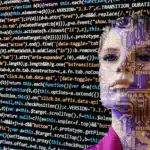Java is a popular programming language that can be used for a wide range of applications, including machine learning and artificial intelligence. In recent years, there has been a significant increase in the use of Java for building intelligent systems that can learn and make decisions based on data.
In this article, we will explore the world of machine learning and AI in Java and we’ll introduce machine learning basics, including supervised and unsupervised learning, deep learning, and neural networks.We will also discuss the different libraries and frameworks available for machine learning and AI in Java, such as Weka, Deeplearning4j, and TensorFlow.
What is Machine Learning?
Machines learn and make decisions based on data through machine learning, without explicit programming. Machine learning uses algorithms and models to analyze data for predictions or classifications.
In machine learning, we use algorithms and models to analyze vast amounts of data and extract meaningful patterns, relationships, and insights. These algorithms leverage labeled or unlabeled data to recognize patterns and make predictions or classifications based on the acquired training.
The training process involves feeding the algorithm with a dataset that consists of input data (features) and the desired output or outcome. The algorithm then learns from this data and adjusts its internal parameters to optimize its ability to make accurate predictions or classifications. This process is often iterative, with the algorithm continually refining its understanding and improving its performance over time.
Types of Machine Learning
There are two main types of machine learning: supervised learning and unsupervised learning.
Supervised Learning
Supervised learning involves training a machine learning model using labeled data. Labeled data consists of input samples (features) along with corresponding output labels or target values. The goal of supervised learning is to teach the machine learning model to predict or classify new, unseen data accurately.
During the training phase, the algorithm learns the patterns and relationships between the input data and the corresponding labels. It maps the input features to the desired output using various algorithms such as decision trees, support vector machines, or neural networks. Once trained, the model can make predictions or classifications on new, unseen data based on the learned patterns.
Supervised learning is commonly used for tasks such as image classification, sentiment analysis, spam detection, or predicting housing prices. The availability of labeled data is crucial for supervised learning since the model relies on the correct labels to learn and generalize patterns accurately.
from sklearn.linear_model import LogisticRegression
from sklearn.model_selection import train_test_split
from sklearn.metrics import accuracy_score
# Load the dataset
X, y = load_dataset() # Load your input features and labels
# Split the data into training and testing sets
X_train, X_test, y_train, y_test = train_test_split(X, y, test_size=0.2, random_state=42)
# Create and train the logistic regression model
model = LogisticRegression()
model.fit(X_train, y_train)
# Make predictions on the test set
y_pred = model.predict(X_test)
# Evaluate the accuracy of the model
accuracy = accuracy_score(y_test, y_pred)
print("Accuracy:", accuracy)Unsupervised Learning
Unsupervised learning, on the other hand, involves training a machine learning model using unlabeled data. Unlike supervised learning, there are no predefined output labels or target values provided during the training phase. Instead, the algorithm aims to discover patterns, structures, or relationships within the data itself.
In unsupervised learning, the algorithm explores the data and identifies inherent patterns or clusters based on the similarities or dissimilarities between samples. It does not rely on any explicit guidance or predefined expectations. The primary objective is to extract meaningful insights or discover hidden structures in the data.
Unsupervised learning techniques include clustering algorithms, dimensionality reduction methods, and anomaly detection. Clustering algorithms group similar data points together based on their shared characteristics. Dimensionality reduction techniques aim to reduce the complexity of the data by representing it in a lower-dimensional space. Anomaly detection helps identify rare or unusual instances in the dataset.
Unsupervised learning is valuable when working with unlabeled or unstructured data, such as customer segmentation, recommendation systems, or exploratory data analysis.
from sklearn.cluster import KMeans
from sklearn.preprocessing import StandardScaler
# Load and preprocess the data
X = load_data() # Load your unlabeled dataset
scaler = StandardScaler()
X_scaled = scaler.fit_transform(X)
# Apply K-Means clustering
kmeans = KMeans(n_clusters=3, random_state=42)
kmeans.fit(X_scaled)
# Get the cluster labels
labels = kmeans.labels_
# Perform analysis on the clusters
# ...
# Visualize the results
# ...Introduction to AI and Neural Networks
Artificial intelligence is a branch of computer science that focuses on creating intelligent machines that can simulate human intelligence and behavior. Neural networks are a key component of AI, and are designed to mimic the structure and function of the human brain.
Libraries and Frameworks for Machine Learning in Java
There are several libraries and frameworks available for machine learning and AI in Java, including Weka, Deeplearning4j, and TensorFlow. These libraries and frameworks provide a range of tools and functionalities for building intelligent systems in Java.
Implementing Machine Learning in Java: Code Examples
Let’s look at some code examples for implementing machine learning in Java. We can use the Weka library to build a decision tree classifier, which can be used for classification tasks. Here’s some sample code:
// Load data
Instances data = DataSource.read("path/to/data.arff");
data.setClassIndex(data.numAttributes() - 1);
// Build classifier
J48 tree = new J48();
tree.buildClassifier(data);
// Make predictions
Instance testInstance = data.get(0);
double prediction = tree.classifyInstance(testInstance);
System.out.println("Prediction: " + prediction);Here’s an example of implementing machine learning using the Weka library in Java for building a decision tree classifier:
import weka.core.Instances;
import weka.core.converters.ConverterUtils.DataSource;
import weka.classifiers.trees.J48;
import weka.classifiers.Evaluation;
public class DecisionTreeClassifierExample {
public static void main(String[] args) {
try {
// Load the dataset
DataSource dataSource = new DataSource("path/to/your/dataset.arff");
Instances dataset = dataSource.getDataSet();
dataset.setClassIndex(dataset.numAttributes() - 1);
// Create a decision tree classifier (J48)
J48 decisionTree = new J48();
decisionTree.buildClassifier(dataset);
// Evaluate the classifier using cross-validation
Evaluation evaluation = new Evaluation(dataset);
evaluation.crossValidateModel(decisionTree, dataset, 10, new java.util.Random(1));
// Print evaluation results
System.out.println(evaluation.toSummaryString());
// Make predictions on new instances
Instance newInstance = dataset.instance(0); // Replace with your own instance
double prediction = decisionTree.classifyInstance(newInstance);
System.out.println("Predicted class: " + dataset.classAttribute().value((int) prediction));
} catch (Exception e) {
e.printStackTrace();
}
}
}In this example, we first load the dataset using the DataSource class, specifying the path to your dataset file. Then, we create an instance of the J48 class, which represents the decision tree classifier in Weka. We build the classifier using the buildClassifier() method, passing in the loaded dataset.
Next, we evaluate the classifier using cross-validation with the Evaluation class. We specify the number of folds (in this case, 10) and a random seed for reproducibility. The evaluation results are then printed using the toSummaryString() method.
Finally, we demonstrate how to make predictions on new instances using the trained classifier. We select an instance from the dataset (in this example, the first instance) and use the classifyInstance() method to obtain the predicted class value. The code snippet prints the result to the console.
Remember to replace "path/to/your/dataset.arff" with the actual path to your dataset file, and adjust the code based on your specific dataset and task requirements.
Note: Make sure to include the Weka library in your project dependencies and import the necessary classes for compilation and execution.
Conclusion
Java provides a powerful and flexible platform for building intelligent systems with machine learning and AI. Building intelligent applications in Java is now easier with a range of available libraries and frameworks. By leveraging the power of machine learning and AI, developers can create innovative and impactful solutions that can help solve real-world problems.
If you need more information about our Java services please contact us!
Posted in AI, Java, Technologies, Uncategorized





